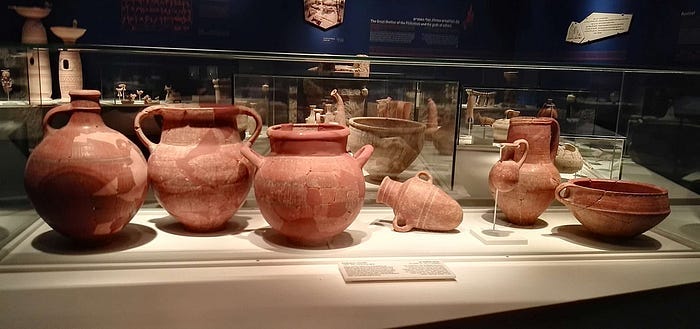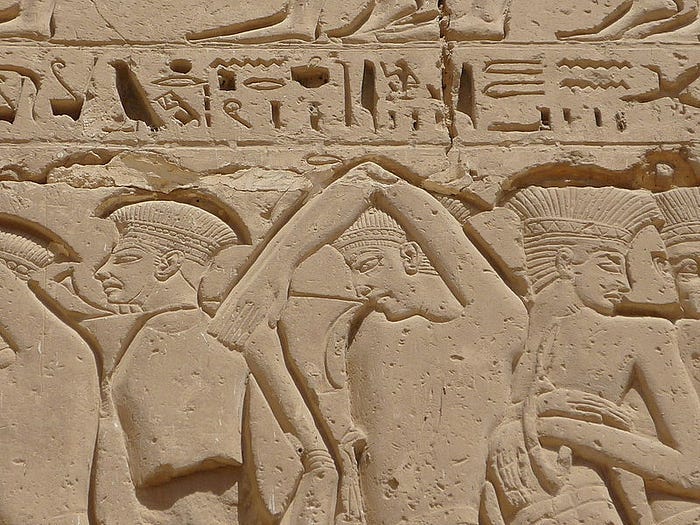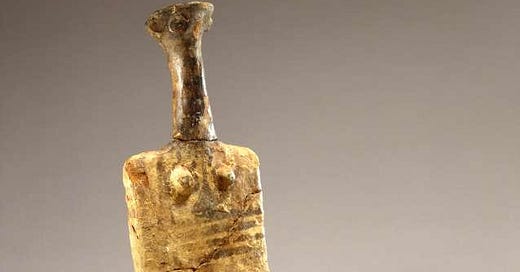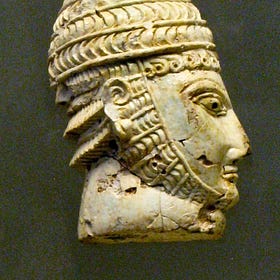Who Were the Real Philistines?
Archaeology and genetics reveal surprising origins of the sworn enemies of the Israelites

In English, “philistine” is a derogatory word for a crude and uncultured individual. The term is derived from the biblical Philistines, who were the arch-nemesis of the Israelites.
However, recent archaeological finds shed new light on the real Philistines. They weren’t a boorish and unsophisticated bunch. Instead, they had well-developed towns, an organized military, a prosperous society, sophisticated pottery, and engaged in long-distance trade.
Philistines built a civilization that lasted half a millennium. A group of five cities — Gaza, Ashkelon, Gath, Ashdod, and Ekron — once made up Philistia, the ancient home of the Philistines.
Who were these enigmatic people? Where did they come from?
In this post, we’ll theorize the origins of the Philistines using the latest archaeological finds and DNA evidence. We’ll also review the religious practices of the Philistines and examine whether the Philistines clashed with the Israelites as described in the Bible.
Let’s dive in!
We’ll begin our search for the origins of the Philistines in Luxor, Egypt.
Reminder: By choosing a paid membership (just $5 a month or $50 annually), you're helping amplify voices that history books too often overlook. Your support means these stories get the attention they deserve.
You’ll gain access to tons of members-only content👇
Full-length deep dives into untold stories, like this one: no paywalls, no cuts.
The entire archive of extraordinary tales from the Ice Age to the Fall of the Mongol Empire, the hottest archaeological finds, and the appetizing history of food.
Early access to special editions, be the first to dive in.
Join lively discussions in members-only posts and subscriber chats. Paid members can initiate conversations in the subscriber chat.
Philistines: One of the Sea Peoples?

On the West Bank of the River Nile, opposite the city of Luxor, lies the Medinet Habu archaeological site. The mortuary temple of Pharaoh Ramses III is one of the site’s most well-known remnants.
Ramses III ( ruled from 1186 BC to 1155 BC) is famous for his clash with the Sea Peoples. The Sea Peoples were a confederation of tribes originating from various lands, blamed for the Bronze Age Collapse.
If you want to learn more about the Sea Peoples and why they attacked cities during the Late Bronze Age, check out my earlier write-up.
If you’d rather skip the story and get the gist, here’s what you need to know:
The Late Bronze Age saw the decline and destruction of many of the great Near Eastern civilizations, including the Mycenaeans, the Minoans, the city-states of the Levant, and the Hittites. We call this catastrophic sequence of events the Bronze Age Collapse (1200 BC to 1150 BC).
The Sea Peoples, a band of seafaring marauders, were held responsible for the wanton damage. Later analysis reveals that many of them were citizens of the declining powers, and not all of them came from the sea.
Weakened polities were an easy target for the Sea Peoples. An all-around system collapse due to drought, food shortages, internal rebellions, and interrupted trade networks incapacitated once mighty Bronze Age powers. The Sea Peoples took advantage of the chaos and dealt a fatal blow to the crumbling civilizations.
Egypt survived the Bronze Age Collapse thanks to Ramses III’s victory against the Sea Peoples at the Battle of the Delta in 1175 BC. The Egyptians took them as prisoners and resettled them all over the empire.
The Pharaoh was glowing with victory and left us an extensive record. Here’s what he had to say about the Sea Peoples:
The foreign countries (i.e. Sea Peoples) made a conspiracy in their islands. All at once the lands were removed and scattered in the fray. No land could stand before their arms: from Hatti, Qode, Carchemish, Arzawa and Alashiya on, being cut off (i.e. destroyed) at one time. A camp was set up in Amurru. They desolated its people, and its land was like that which has never come into being. They were coming forward toward Egypt, while the flame was prepared before them. Their confederation was the Peleset, Tjeker, Shekelesh, Denyen and Weshesh, lands united. They laid their hands upon the land as far as the circuit of the earth, their hearts confident and trusting: ‘Our plans will succeed’.
You’re probably thinking, wait, this was a conversation about the Philistines. What does this have to do with the Sea People?
If you check Ramses’ inscription, one group is vital for us.
The Peleset.
You’re on the right track if the name reminds you of “Palestine” or “Philistine.” The Peleset were the ancestors of the Philistines. After defeating them, Ramses III moved them to southern Canaan, in present-day Israel and Palestine, and tasked them with defending Egypt’s borders.
For the Egyptians, Canaan was strategically important. Canaanite immigrants to Egypt, known as the Hyksos, overthrew the native Pharaohs and ruled the country for a century (from 1650 BC to 1550 BC). After deposing the Hyksos, the militaristic New Kingdom made it a top priority to treat Canaan as an Egyptian client state.
Gaza and Ashkelon were Egyptian garrison towns long before they became part of Philistia.
You might wonder: isn’t it a bit of a stretch to conclude that the Peleset were Philistines just because they sound similar? Is there any archaeological evidence to back up this theory?
Brace yourselves for a story of pots, pigs, and a boat from the Aegean Sea.
Keep reading with a 7-day free trial
Subscribe to Forgotten Footprints to keep reading this post and get 7 days of free access to the full post archives.




